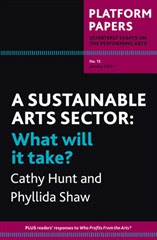Review: Sweeney Todd
Yesterday we co-ordinated the family's complex social schedules and entrained to our favourite cinema, the Sun Theatre in Yarraville (cheap tickets, a bar, superb pseudo art deco theatres - one with actual squishy leather armchairs - and no ads: why would you go anywhere else?) And there we saw Tim Burton's fantastic - in all senses of the word - film adaptation of Sweeney Todd.
As everyone knows, Johnny Depp and Helena Bonham Carter star in this cinematic adaptation of what is generally thought to be Stephen Sondheim's greatest musical, and possibly the best post-war musical of them all. And I'm a confirmed Tim Burton fan. I went with high expectations; and I came out with those expectations satisfyingly fulfilled. I loved it.
There's been much discussion about the singing voices of Depp and Bonham Carter (surprisingly respectable, actually - more like theatre voices, drawing their power from actorly expressiveness rather than technical bravura) and Burton's liberal use of CGI. Some have quibbled with the film's lack of realism. Pish posh. Asking for realism in Sweeney Todd is somewhat akin to wanting King Lear to be a comedy. Mind you, Trevor Nunn came close with his operetta production of Lear, so the world is always stranger than you think.
The tale of Sweeney Todd started life as a penny dreadful, a gory thriller series by freelance journalist George Dibden-Pitt. It was so successful that Dibden-Pitt adapted it as a melodrama, and it played in the London "Blood Tubs", theatres that hosted the sensational X-rated entertainment of the time. In the late 1960s, playwright Christopher Bond re-adapted the story as a play, with some success. This was when Stephen Sondheim encountered Sweeney Todd and decided it would make a ripping musical; and the rest, as they say, is history.
Burton's cinematic adaptation is brilliant. Screenwriter John Logan has cut songs, conflated characters and simplified the plot to make a fast-flowing narrative that moves seamlessly from scene to scene. From the moment the organ music swells up behind the credits, its conventions are clear, its artifice apparent. There is absolutely no dislocation when characters break into song. It's maybe the most successful integration of music and dialogue I've seen on screen. And it demonstrates, by the bye, how much Sondheim owes to Brecht.
Burton has brought it to the screen without compromising the dark, melodramatic heart of the original. This last point is where I think the film is spectacularly successful: his gift for creating fantastic worlds that exist at an oblique angle to our own here makes an imaginary London - a city of narrow, dank lanes, dripping, rat-infested sewers and sombre shadows, in which the only living colour is that of blood. It's populated by a grotesque cast of characters whose compelling truth exists in their extremity. Sweeney Todd is pure melodrama.
The advent of realism in the 20th century meant that melodrama fell into disrepute and is now used more often as perjorative description; but it has its place in art, and it's not a dishonourable one. Its power exists in its heightened emotional life, a garish and vivid energy forged from its blatant artifice. Its artifice was picked up and transformed most influentially by Brecht, but it's an energy you can also see in Dostoevsky (in Crime and Punishment, for instance, the image of the weeping Marmaladov children dancing in the streets, while their demented and dying mother screams in the background, is total melodrama).
Sondheim uses the conventions of melodrama to make what is surely the bleakest popular musical ever written. The world it portrays is truly Hobbesian - the law, taken here in its most literal sense, is to eat or be eaten. "The cruelty of men," says Todd, "is as wondrous as Peru..." Todd has escaped from the penal colony of Australia, a place of fabled sadism, after being unjustly condemned to lifelong transportation by the evil Judge Turpin (played by Alan Rickman with a gentle sense of corruption that is more disturbingly creepy than any histrionics). Turpin has removed Sweeney so he can seduce his wife, the beautiful Lucy (Laura Michelle Kelly); when Lucy poisons herself, in her despair, he adopts instead Todd's beautiful daughter, Johanna (Jayne Wisener), on whom he has equally evil designs.
There is the obligatory romantic couple, innocents caught in a world of base and murderous lusts. The appropriately named Anthony Hope (Jamie Campbell Bower) falls in love with Johanna, and plots to rescue her, eventually dragging her out of a squalidly Hogarthian lunatic asylum. But even here, innocence is inevitably damaged by the violence of the world it inhabits; the happy ending already carries the seed of its own destruction. In this respect, the film is, if anything, even darker than the original musical. It's kind of amazing that they all got away with it, given the soft-sell of the Hollywood machine: and if the film or the musical had in fact been more realistic, they might not have.
But it's an open secret that if you're looking for incisive social commentary in contemporary popular culture, you're often better off searching through the pulp fictions: you'll find a much more uncompromising vision in Philip K. Dick (Bladerunner, Total Recall) than in the earnest political films of left-wing Hollywood, a more radical and complex politics in the world of China Mieville than in the ideological certainties of David Hare. The fantastic is perhaps the only place in popular culture where the real world can be truly imagined.












